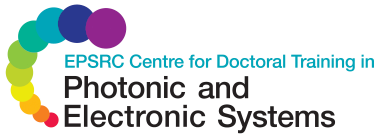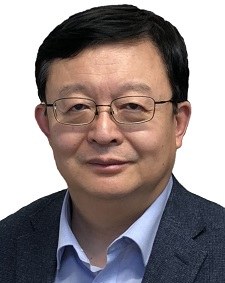Research Group Leaders
Together, the Groups represented here comprise over 100 members of academic staff at Cambridge and UCL
Group leaders who have a key role in delivering the training and research programme are:
|
Dr Angus Bain (Atomic, Molecular, Optical and Positron Physics group (AMOPP), UCL) Angus heads the Ultrafast Laser Spectroscopy Laboratory within the AMOPP group and is a Reader in Physics. His work concentrates on the development of novel time-resolved polarised laser techniques and nonlinear optics. Current work includes studies into fluorescence resonance energy transfer with Cancer Research UK, the development of high two-photon cross-section molecular probes and single molecule spectroscopy (CNRS Rennes). He has also has pioneered measurements of liquid crystal dynamics. |
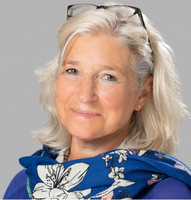 Professor Polina Bayvel (Optical Networks Group, UCL) Polina is the Head of the Optical Networks Group (ONG) in the Department of Electronic & Electrical Engineering at UCL. Her research interests are in the area of optical communications and networks on different time- and length scales, from trans-oceanic distances to intra- and inter-data centre communications and routing. This includes the analysis and implementation of wavelength-routed optical networks, high-speed optical transmission, and the study and mitigation of optical fibre nonlinearities. More recently she has focused on the study of capacity limits in ultrawideband nonlinear optical networks and nonlinearity-mitigation techniques. |
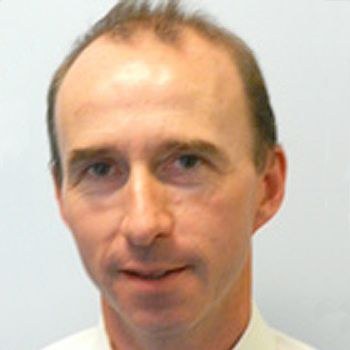 Professor Paul Brennan (Sensors Systems and Circuits group,, UCL) Paul is a Professor of Microwave Electronics at UCL. He has authored widely in many areas including RF and microwave electronics, antennas, radar, and phase-locked loops, including a textbook Phase-Locked Loops: Principles and Practice (McGraw Hill/Macmillan, 1996). His current research interests include phase-locked loop frequency synthesis, RF-ID tag location, geophysical radar imaging, and phased array antennas. |
|
Professor Daping Chu (Centre for Photonic Devices and Sensors, Cambridge) Daping is Nanjing Professor of Technology and Innovation at the University of Cambridge. He is also Director of the Cambridge Centre for Photonic Devices and Sensors (CPDS). His research interests include high information bandwidth spatial light modulators, tunable metasurface, optical computing, optical switches, holography, 3D displays and AR HMDs and HUDs, with the aim for application and commercialisation. |
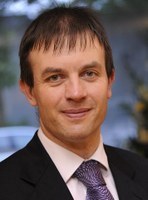 Professor Andrew Flewitt (Cambridge) Andrew is Professor of Electronic Engineering in Cambridge University Engineering Department and is currently head of the Electrical Engineering Division. He graduated in Physics from the University of Birmingham in 1994 before moving to Cambridge to carry out a PhD in Engineering investigating the growth of hydrogenated amorphous silicon thin films using scanning tunnelling microscopy which he completed in 1998. He stayed in Cambridge as a Research Associate sponsored by Philips Research Laboratories working on the low temperature fabrication of thin film transistors. He was first appointed to a Lectureship in 2002 and was promoted to Professor in 2015. Current research interests encompass both large-area electronics and microelectromechanical systems. He is a Member of the Institute of Physics, a Member of the Institution of Engineering and Technology and is a Chartered Engineer. |
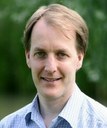 Professor Neil Greenham (Optoelectronics Group, Cambridge) Neil is Professor of Physics based in the Optoelectronics Group of the Cavendish Laboratory. He is an expert in electronic and photonic properties of novel solution-processible semiconductors. He made important early advances in the development of polymer light-emitting diodes, improving efficiencies and understanding the physics of device operation. His research now focuses on photovoltaics, using device measurements, spectroscopy, advanced imaging techniques and modelling to understand and control loss mechanisms, and developing new materials to break the conventional limits on solar cell efficiency. |
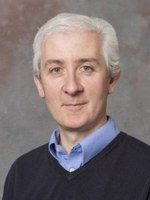 Professor Jem Hebden (Biomedical Optics Research Laboratory, UCL) Jem is Professor of Biomedical Optics and Director of the UCL Biomedical Optics Research Laboratory (BORL). His research has largely concerned the development of systems for diffuse optical tomography (DOT), and he has pioneered the development of time-domain techniques in particular. Applications of the technology have focussed on imaging of the newborn infant brain, and especially the assessment of hypoxic ischemic encephalopathy and perinatal arterial ischaemic stroke. His team was responsible for generating the first whole-brain functional images of newborn infants using optical techniques, and the first full-scalp maps of cortical haemodynamic changes during seizures. Recently, Jem has been exploring the potential of a new diagnostic technique with wavelength-modulated near-infrared spectroscopy. |
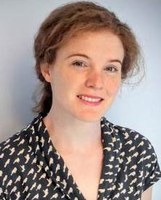 Professor Hannah Joyce (Cambridge) Hannah's research aims to create nanoscale and low-dimensional components for future electronic and optoelectronic devices. These components include low-dimensional materials such as graphene, monolayer transition metal dichalcogenides (e.g. monolayer MoS2) and semiconductor nanowires. Hannah leads the research group: electronic + photonic nanodevices at University of Cambridge. |
 Professor Clemens Kaminski (Cambridge) Clemens is Professor of Chemical Physics and Head of the Department of Chemical Engineering and Biotechnology at the University of Cambridge. His group develops photonic methods for research in health and disease which include optical super-resolution and machine learning techniques. He is a Fellow of the Optical Society of America, the Institute of Physics, and the Royal Society of Chemistry. |
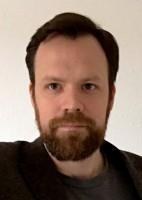 Professor Steven Lee (Cambridge) Steven is Professor of Biophysical Chemistry in the Department of Chemistry at the University of Cambridge. He leads the TheLeeLab, which centers on developing new biophysical methods to answer fundamental biological questions, primarily through the use single-molecule fluorescence spectroscopy and multidimensional super-resolution imaging. Professor Lee completed his DPhil in Physical Chemistry with Dr. Mark Osborne, before postdoctoral work with both Prof Sir David Klenerman (FRS MedSci) and Prof W.E Moerner (Nobel Prize Chemistry, 2014). He manages a research team of talented researchers who profoundly believe molecules should be looked at one at a time. He is the 2017 recipient of the Marlow Award in Physical Chemistry from the Royal Society of Chemistry. |
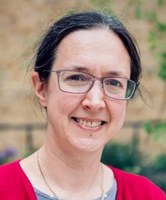 Prof Rachel Oliver (Cambridge Centre for Gallium Nitride, Cambridge) Rachel is Director of the Cambridge Centre for Gallium Nitride. She leads research projects across the full range of the Centre’s activities, and her personal passion is understanding how the small scale structure of nitride materials effects the performance and properties of devices. She uses expertise in microscopy and materials growth to lead the development of new nanoscale nitride structures which will provide new functionality to the devices of the future. |
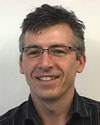 Dr Bill O’Neill (Cambridge) Having completed an advanced fellowship in September 2003 at Liverpool University and established a £5M EPSRC Innovative Manufacturing Research Centre in 2002, Bill was appointed to a lectureship in production processes within the Institute for Manufacturing in Cambridge University Engineering Department in 2003. He has written over 70 scientific papers on the subject of lasermatter interactions, optical engineering and manufacturing process technologies, he is a member of a number of government and industrial advisory boards, and is a non-executive director of Advanced Laser Solutions Ltd. |
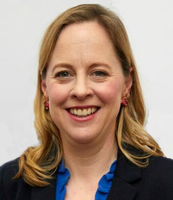 Professor Róisín Owens (Cambridge) Róisín is Professor of Bioelectronics at the Department of Chemical Engineering and Biotechnology at the University of Cambridge. She received her BA in Natural Sciences (Mod. Biochemistry) at Trinity College Dublin, and her PhD in Biochemistry and Molecular Biology at Southampton University. She carried out two postdoc fellowships at Cornell University, on host-pathogen interactions of Mycobacterium tuberculosis in the dept. of Microbiology and Immunology, and on rhinovirus therapeutics in the dept. of Biomedical Engineering. From 2009-2017 she was a group leader in the Dept. of Bioelectronics at Ecole des Mines de St. Etienne, on the microelectronics campus in Provence. Her current research centers on application of organic electronic materials for monitoring biological systems in vitro, with a specific interest in studying the gut-brain-microbiome axis. |
 Professor Sir Michael Pepper (Electronic Materials and Devices, UCL) Mike is Pender Professor of Nanoelectronics and a staff member for the London Centre for Nanotechnology. He pioneered the study of low dimensional electron gas systems and the associated quantum effects, and his career has encompassed both academic and industrial sectors. Sir Michael was elected a Fellow of the Royal Society in 1983 and a Fellow of Trinity College in 1982. He has been awarded the Hughes Medal and the Royal Medal of The Royal Society and the first Mott Medal of the Institute of Physics, as well as the Guthrie (Gold) Medal and the Europhysics Prize of the European Physical Society. He received a knighthood in the 2006 New Year's Honours list for services to physics and has received honorary degrees and given named lectures including the Mountbatten Memorial Lecture of the IET and the Royal Society’s Bakerian Lecture. |
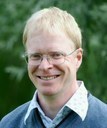 Professor David Ritchie (Semiconductor Physics Group, Cambridge) David is Professor of Experimental Physics and Head of the Semiconductor Physics Group at the Cavendish Laboratory. He has been working on III-V semiconductor physics and has extensive experience of the growth, fabrication and measurement of low dimensional electronic and optical structures. He has been co-author of over 750 papers and has been awarded the 2008 Tabor medal and prize by the UK Institute of Physics for distinguished research in surface or nanoscale physics. |
|
Professor Alwyn Seeds (Photonics research group, UCL) Alwyn played a leading role in the development of millimetre-wave monolithic integrated circuit technology, creating millimetre-wave transmitter integrated circuits in the early 1980s. He also established the research area of Microwave Photonics with work on the use of optical signals to control microwave devices, optical beam forming in phased array systems and the development of techniques for the distribution of microwave signals, including wireless signals, over optical fibre. Alwyn has developed photonic integration solutions for key sub-systems using hybrid and monolithic techniques and been closely involved in the creation of the first practical semiconductor lasers on silicon substrates, work that has been extensively cited. |
 Professor Henning Sirringhaus (Cambridge) Henning is Hitachi Professor of Electronic Device Physics and a Royal Society Research Professor at the Cavendish Laboratory. He has been working in Cambridge in the field of charge transport in organic semiconductors and their application in field-effect transistors, thermoelectrics and spintronics since 1997. He co-founded Plastic Logic Ltd./FlexEnable, a technology start-up company commercialising printed organic transistor technology. |
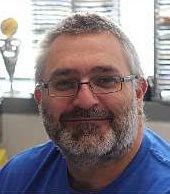 Professor Tim Wilkinson (CMMPE Group, Cambridge) Tim is Professor of Photonic Engineering at the University of Cambridge and Centre for Molecular Materials, Photonics and Electronics (CMMPE) Group Leader. He has had a long term research interest into the applications of liquid crystal (LC) devices, holograms and related photonic applications. His research has pioneered hybrid LC/CNT (carbon nanotube) technology, including design and fabrication of plasmonic optical filters, waveguides, resonators, gyroids and super-resolution lenses. His recent breakthrough delivered the algorithms that lead to the commercialisation of holographic projectors. Prof. Wilkinson is currently researching the design of next generation LC devices suitable for 3D holographic displays and the feasibility of a fast elector-optical effect suitable to modulate the phase of the light at rates < 1mSec. |
